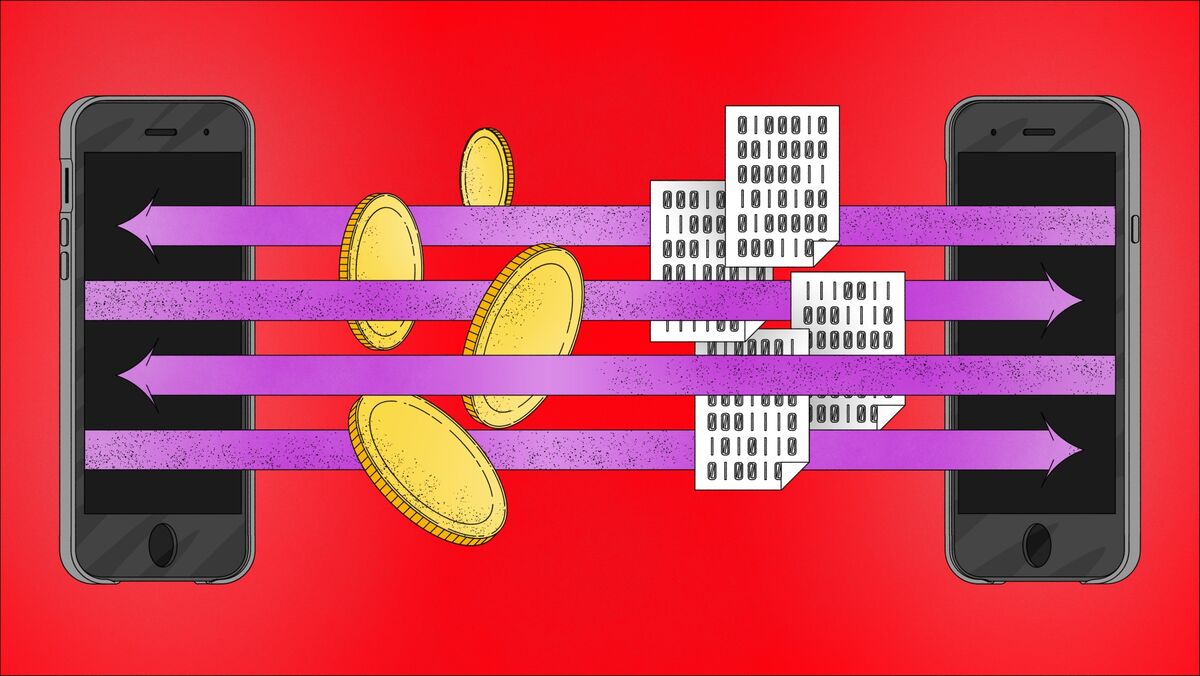Introduction
Electronic trading, also known as e-trading or online trading, has revolutionized the way financial markets operate. In simple terms, it refers to the buying and selling of financial instruments, such as stocks, bonds, currencies, or commodities, through electronic platforms.
With the advent of technology, traditional methods of trading, which involved physical exchanges and face-to-face interactions, have been replaced by digital platforms. Electronic trading has made it possible for individuals and institutions to trade financial instruments instantaneously, anytime and from anywhere with an internet connection.
The rapid growth of electronic trading can be attributed to several factors. Firstly, it offers greater convenience and accessibility to traders. Instead of relying on physical exchanges and brokers, investors can now execute trades using their computers or mobile devices. This allows for faster and more efficient transactions.
Secondly, electronic trading enables market participants to access a global pool of liquidity. Unlike traditional exchanges that were limited to specific geographical locations, electronic trading platforms connect buyers and sellers from all over the world. This increases market efficiency and enhances price discovery.
Furthermore, electronic trading has significantly reduced transaction costs. By eliminating the need for intermediaries and manual processes, it has made trading more cost-effective. This has opened up opportunities for retail traders to participate in financial markets without the barriers that were previously in place.
However, along with its advantages, electronic trading also faces certain challenges. The reliance on technology makes markets vulnerable to technical glitches and cyber threats. Any disruptions in the trading infrastructure can have severe consequences, affecting market stability and investor confidence.
Moreover, electronic trading has led to concerns about market fragmentation and increased trading volumes. This has raised questions about the fairness and transparency of markets, as well as the potential for manipulation and excessive speculation.
Despite these challenges, electronic trading continues to gain momentum. Advancements in technology, such as artificial intelligence and blockchain, have the potential to further transform the landscape of financial markets.
In the following sections, we will explore the evolution of electronic trading, its advantages and disadvantages, the types of electronic trading, the key players in the industry, regulation, and future trends. By understanding the intricacies of electronic trading, we can navigate the evolving financial landscape more effectively.
Definition of Electronic Trading
Electronic trading, also referred to as e-trading or online trading, is the process of buying and selling financial instruments electronically through electronic platforms. It involves the use of computer networks and internet connectivity to facilitate trading activities.
Traditionally, trading involved physical exchanges, where buyers and sellers would meet in a designated location to execute transactions. However, with the advent of technology, electronic trading has become the dominant method in financial markets.
Electronic trading platforms provide a virtual marketplace where market participants, including individual investors, banks, hedge funds, and other financial institutions, can trade various financial instruments. These instruments include stocks, bonds, options, futures, currencies, and commodities.
One of the key features of electronic trading is its speed and efficiency. Transactions that once took hours or even days to complete can now be executed instantaneously. This is made possible by the automation of order processing, matching, and execution.
Electronic trading platforms also offer a wide range of functionalities and tools to assist traders in their decision-making process. These include real-time market data, charting tools, technical analysis indicators, and order management systems.
Furthermore, electronic trading provides transparency and accessibility to market participants. It allows traders to monitor market prices and volume trends in real-time, enabling them to make informed trading decisions. Additionally, electronic trading platforms provide access to a global pool of liquidity, allowing investors to buy or sell financial instruments at competitive prices.
It is important to note that electronic trading is not limited to individual investors. Institutional investors, including pension funds, mutual funds, and asset managers, also utilize electronic trading platforms to efficiently execute large-scale trades.
With the rise of mobile technology, electronic trading has become even more accessible to retail investors. Mobile trading apps allow individuals to trade on the go, providing greater flexibility and convenience.
Overall, electronic trading has transformed the way financial markets operate. It has increased market efficiency, reduced transaction costs, and expanded market access for participants. As technology continues to advance, electronic trading is expected to evolve further, shaping the future of financial markets.
Evolution of Electronic Trading
The evolution of electronic trading can be traced back to the 1970s when the financial industry started to adopt computerized systems for processing and executing trades. This marked the beginning of the transformation from manual trading to electronic trading.
Initially, electronic trading systems were limited to specific exchanges or trading venues. These systems allowed traders to enter their orders electronically, eliminating the need for physical trading floors and paper-based processes. However, these systems were mainly used by large institutional investors and were not accessible to individual retail traders.
In the 1990s, with the widespread adoption of the internet, electronic trading began to gain more traction. Online brokerage firms started offering trading platforms to retail investors, enabling them to trade stocks and other financial instruments from the comfort of their homes. This democratization of access to financial markets marked a significant milestone in the evolution of electronic trading.
As technology continued to advance, electronic trading systems became more sophisticated and capable of handling a wider range of financial instruments. The development of electronic communication networks (ECNs) further revolutionized the trading landscape by providing direct access to market liquidity and enabling participants to interact with each other directly.
The 21st century witnessed a rapid expansion of electronic trading with the emergence of high-frequency trading (HFT). HFT utilizes complex algorithms and powerful computer systems to execute trades at lightning-fast speeds, often in fractions of a second. This type of trading has significantly increased trading volumes and liquidity in the markets.
Another significant development in the evolution of electronic trading is the rise of cryptocurrencies and blockchain technology. Cryptocurrency exchanges facilitate the electronic trading of digital currencies such as Bitcoin and Ethereum. These decentralized digital assets have gained popularity due to their potential for transparency, security, and efficient cross-border transactions.
Today, electronic trading has become the primary method of trading in most financial markets. Traditional trading floors and manual processes have been largely replaced by electronic platforms, offering greater speed, efficiency, and access to a global network of traders.
Furthermore, advancements in technology continue to shape the evolution of electronic trading. Artificial intelligence, machine learning, and big data analytics are being increasingly used to analyze market data and improve trading strategies. Additionally, the adoption of distributed ledger technology and smart contracts holds the potential to further streamline and automate trading processes.
It is evident that electronic trading has come a long way since its early beginnings. The continuous advancements in technology and the changing regulatory landscape will continue to shape the future of electronic trading, making it a dynamic and ever-evolving aspect of the financial industry.
Advantages of Electronic Trading
Electronic trading has brought numerous advantages to the world of financial markets, revolutionizing the way trading is conducted. Below are some of the key advantages of electronic trading:
1. Accessibility: Electronic trading has democratized access to financial markets. Individual investors, regardless of their location, can now participate in trading activities through online platforms. This accessibility has opened up opportunities for retail traders to invest in a wide range of financial instruments.
2. Speed and Efficiency: Electronic trading enables near-instantaneous execution of trades. Manual processes and paperwork are eliminated, allowing transactions to be completed efficiently. This speed is especially beneficial for high-frequency traders and institutional investors executing large-scale trades.
3. Global Market Access: Electronic trading platforms provide access to a global network of traders and market participants. This allows investors to trade across different time zones and access a larger pool of liquidity. It also promotes price discovery and market efficiency.
4. Lower Transaction Costs: The automation of trading processes and the elimination of intermediaries have significantly reduced transaction costs. With electronic trading, traders can avoid the fees associated with traditional methods such as broker commissions and physical paperwork. This cost-effectiveness benefits both individual and institutional investors.
5. Transparency: Electronic trading platforms offer real-time market data and transparent order books, providing traders with a clear view of market prices and trends. This transparency enables informed decision-making and enhances market efficiency.
6. Flexibility: Electronic trading allows traders to execute trades at any time, as markets operate 24 hours a day. This flexibility accommodates traders in different time zones and enables them to react to market conditions promptly.
7. Risk Management: Electronic trading platforms provide a wide range of risk management tools, including stop-loss orders and limit orders. These tools allow traders to set predefined levels at which trades will be executed or terminated, helping to manage risk effectively.
8. Customization and Analysis: Electronic trading platforms offer advanced features and tools to customize trading strategies, analyze market data, and execute trades efficiently. Traders can access real-time charts, technical indicators, and historical data to make informed trading decisions.
9. Automation: Electronic trading allows for the automation of trading strategies. Traders can use algorithms and pre-set conditions to execute trades automatically. This reduces human errors and emotions that can impact trading outcomes.
10. Innovation and Adaptability: Electronic trading is constantly evolving as technology advances. The financial industry continues to explore new technologies such as artificial intelligence, machine learning, and blockchain to further enhance the trading experience and improve market efficiency.
Overall, the advantages of electronic trading provide individuals and institutions with greater access, speed, efficiency, and cost-effectiveness in financial markets. As technology continues to advance, electronic trading will continue to evolve, shaping the future of trading and investment.
Disadvantages of Electronic Trading
While electronic trading offers numerous advantages, it is not without its disadvantages. Understanding these drawbacks is essential for market participants to make informed decisions and mitigate potential risks. Below are some of the key disadvantages of electronic trading:
1. Technical Glitches: Electronic trading systems are vulnerable to technical failures, including connectivity issues, power outages, and software glitches. Any disruptions to the trading infrastructure can result in trading delays, order errors, or system crashes, impacting market participants’ ability to execute trades effectively.
2. Cybersecurity Risks: The reliance on technology exposes electronic trading systems to cyber threats such as hacking, data breaches, and distributed denial-of-service (DDoS) attacks. Infiltration of electronic trading platforms can compromise sensitive financial information, disrupt trading activities, and erode investor confidence.
3. Market Volatility: Electronic trading has the potential to contribute to increased market volatility due to the high speed and large volumes of trades executed. The rise of algorithmic trading and high-frequency trading can exacerbate market fluctuations, leading to rapid price swings and increased market instability.
4. Lack of Personal Interaction: Unlike traditional trading methods, electronic trading lacks the personal interaction between traders, which may lead to a reduced sense of trust and accountability. The absence of face-to-face communication can also hinder the ability to negotiate and establish personal relationships with counterparties.
5. Market Fragmentation: Electronic trading has led to the fragmentation of markets as multiple trading platforms and venues compete for liquidity. This fragmentation can make it more challenging for traders to access the best prices and may result in inefficiencies and disparities in order execution.
6. Potential for Market Manipulation: The increased speed and automation of electronic trading have raised concerns about potential market manipulation. Manipulative practices, such as spoofing or layering, can be executed more easily using automated algorithms, potentially distorting market prices and harming market integrity.
7. Reliance on Technology: Electronic trading is heavily reliant on technology, and any failures or disruptions can have significant consequences. Traders and financial institutions must ensure robust backup systems, redundancy measures, and cybersecurity protocols to protect against potential technology-related risks.
8. Information Overload: Electronic trading provides a vast amount of real-time market data, which can be overwhelming for traders. Processing and analyzing this information accurately can be challenging, potentially leading to errors or poor decision-making. Traders must develop effective strategies to filter and interpret the data effectively.
9. Regulatory Compliance: Electronic trading is subject to stringent regulatory requirements to safeguard market integrity and protect investors. Compliance with these regulations, such as reporting obligations and risk management measures, can be complex and time-consuming, particularly for smaller market participants.
10. Disconnection from the Human Element: The automation and speed of electronic trading can sometimes detach traders from the human element of the market. This can lead to emotional detachment, less consideration of market fundamentals, and higher susceptibility to herd mentality or irrational trading behaviors.
It is important for market participants to carefully consider these disadvantages and implement appropriate risk management strategies when engaging in electronic trading. By understanding and addressing these challenges, traders can navigate the electronic trading landscape more effectively and capitalize on its advantages.
Types of Electronic Trading
Electronic trading encompasses various types of trading activities conducted through digital platforms. These types of electronic trading cater to different financial instruments, trading strategies, and market participants. Below are some of the common types of electronic trading:
1. Equities Trading: Equities trading refers to the buying and selling of shares or stocks of publicly traded companies. Electronic equities trading allows investors to participate in stock markets through online brokerage platforms. Traders can place orders to buy or sell stocks in real-time, accessing a wide range of stock exchanges globally.
2. Fixed Income Trading: Fixed income trading involves the buying and selling of debt securities, such as government bonds, corporate bonds, and municipal bonds. Electronic fixed income trading platforms provide liquidity and facilitate efficient price discovery for these instruments. They allow traders to access a broader range of bond offerings and execute trades with ease.
3. Foreign Exchange (Forex) Trading: Forex trading involves the buying and selling of currencies in the global foreign exchange market. Electronic forex trading platforms connect traders with liquidity providers, such as banks and financial institutions, allowing them to trade currency pairs electronically. These platforms provide real-time exchange rates, charting tools, and order execution functionalities.
4. Derivatives Trading: Derivatives trading involves the buying and selling of financial contracts derived from underlying assets, such as options, futures, and swaps. Electronic derivatives trading platforms enable traders to speculate on the price movements of these instruments without owning the underlying assets. These platforms offer advanced trading functionalities and risk management tools for derivatives trading.
5. Commodities Trading: Commodities trading involves the buying and selling of physical or virtual commodities, including precious metals, energy products, agricultural products, and more. Electronic commodities trading platforms connect traders with global commodity exchanges, providing access to price quotes, market data, and order execution for various commodity contracts.
6. Algorithmic Trading: Algorithmic trading, also known as algo trading or automated trading, utilizes computer algorithms to execute trades based on predefined rules and strategies. These algorithms analyze market data, identify trading opportunities, and automatically execute trades in real-time. Algorithmic trading is prevalent in high-frequency trading and institutional trading.
7. Retail Trading: Retail trading refers to small-scale trading activities conducted by individual investors. Electronic retail trading platforms are designed to cater to the needs of individual traders, providing user-friendly interfaces, educational resources, and support for various financial instruments. Retail traders can access stock markets, forex markets, and other electronic trading platforms to trade with relatively smaller capital.
8. Social Trading: Social trading platforms leverage social networks and user-generated content to enable traders to share their trading strategies and insights with others. Traders can replicate or follow the trades of successful traders, essentially allowing for a form of copy trading. These platforms facilitate interaction and collaboration between traders, creating a community-driven trading environment.
These are just a few examples of the types of electronic trading available in the financial markets. Each type offers different features, benefits, and risks. It is important for traders to understand the specific characteristics of each type and choose the one that aligns with their trading objectives and risk tolerance.
How Electronic Trading Works
Electronic trading operates through a complex network of computer systems and infrastructure that enables seamless trading activities. Understanding how electronic trading works is essential for market participants to navigate the digital trading landscape effectively. Here is a simplified overview of how electronic trading works:
1. Trading Platform: Electronic trading begins with the use of a trading platform, which can be a web-based application or a dedicated software. Traders access the platform through their computers or mobile devices, connecting to the electronic trading network.
2. Order Placement: Traders enter their buy or sell orders using the trading platform’s order entry system. They specify the financial instrument, quantity, and price at which they wish to buy or sell. These orders are then transmitted through the trading platform to the electronic marketplace.
3. Order Routing: Upon receiving the order, the electronic trading system routes it to various liquidity providers, including market makers, exchanges, or other trading participants. This process helps ensure the best execution of the order by finding the best available price and liquidity.
4. Order Matching: In the electronic marketplace, buy and sell orders are matched based on their price and time priority. The electronic trading system matches compatible orders, resulting in executed trades. This matching happens in real-time, allowing for speedy execution.
5. Clearing and Settlement: Once a trade is executed, the electronic trading system initiates the clearing and settlement process. This involves verifying the trade details, reconciling the positions of the buyer and seller, and facilitating the transfer of ownership and funds between relevant parties.
6. Market Data: Throughout the trading process, electronic trading platforms provide real-time market data, including prices, order books, and trade volumes. This data is crucial for traders to assess market conditions, spot trading opportunities, and make informed trading decisions.
7. Risk Management: Electronic trading platforms incorporate risk management features to protect traders and the integrity of the market. These features may include pre-trade risk checks, position limits, and circuit breakers to prevent excessive market volatility or unauthorized trading activities.
8. Trade Reporting: Electronic trading systems generate trade reports, which provide traders and regulatory bodies with information about executed trades. These reports contain details such as the trade price, quantity, time stamp, and counterparty information. Trade reporting ensures transparency and accountability in the market.
9. Monitoring and Surveillance: Electronic trading platforms are closely monitored for any irregularities or potential market abuses. Market surveillance systems employ advanced algorithms and analytics to detect manipulative trading behaviors or suspicious activities, helping maintain market integrity.
It is important to note that the specifics of how electronic trading works can vary depending on the type of financial instrument being traded and the regulatory requirements of the market. Additionally, technological advancements and industry innovations continue to shape the functionality and efficiency of electronic trading systems.
By understanding the workings of electronic trading, market participants can effectively navigate the digital landscape, capitalize on trading opportunities, and manage risks in the fast-paced world of financial markets.
Key Players in Electronic Trading
Electronic trading involves the participation of various key players who play crucial roles in facilitating trading activities and maintaining market efficiency. Understanding the roles of these key players is essential for navigating the electronic trading landscape effectively. Below are the primary key players in electronic trading:
1. Exchanges: Exchanges serve as central marketplaces where buyers and sellers come together to trade financial instruments. These can be traditional stock exchanges, commodity exchanges, or electronic trading platforms that provide access to various assets. Exchanges establish the rules and regulations for trading, ensure fair and transparent market operations, and oversee the listing and trading of financial instruments.
2. Brokerage Firms: Brokerage firms act as intermediaries between traders and the market. They provide access to electronic trading platforms and offer trading services to investors. Brokerage firms facilitate order placement, execute trades on behalf of their clients, provide market research and analysis, and offer other value-added services to support traders in their investment decisions.
3. Market Makers: Market makers are financial institutions or specialized trading firms that provide liquidity in the market. They continuously quote bid and ask prices for specific financial instruments, ensuring there is always a counterparty available to facilitate trading. Market makers also play a crucial role in reducing bid-ask spreads and enhancing market efficiency.
4. Clearinghouses: Clearinghouses act as intermediaries between buyers and sellers, guaranteeing the settlement of trades. When a trade is executed, the clearinghouse steps in to become the buyer to every seller and the seller to every buyer. They ensure the proper calculation and collection of margin requirements, manage counterparty credit risk, and facilitate the clearing and settlement of trades.
5. Liquidity Providers: Liquidity providers are financial institutions that commit to buying or selling an asset at stable prices. They enhance market liquidity by providing continuous bid and ask quotes. Electronic trading platforms often rely on liquidity providers to ensure there is sufficient liquidity for traders to execute their orders at competitive prices.
6. Regulators: Regulators play a vital role in overseeing electronic trading activities to ensure fair and transparent markets. They establish rules and regulations, monitor market operations, enforce compliance, and protect investor interests. Regulators also work to detect and prevent fraudulent activities, market manipulation, and other unlawful practices, fostering trust and stability in electronic trading.
7. Technology Providers: Technology providers develop and maintain the electronic trading platforms, order management systems, algorithmic trading tools, and other related technologies. These providers offer cutting-edge software solutions, connectivity services, and infrastructure to support the smooth operation of electronic trading systems.
8. Traders: Traders are the individuals or institutions that participate in electronic trading. They include individual retail investors, institutional investors, hedge funds, and proprietary trading firms. Traders use electronic trading platforms to execute trades, implement trading strategies, manage risks, and profit from market movements.
Each of these key players plays a crucial role in the functioning and efficiency of electronic trading. Their collaboration and interaction form the backbone of electronic markets, providing the necessary infrastructure and expertise to facilitate trading activities and maintain market integrity.
Regulation of Electronic Trading
Given the significant impact of electronic trading on financial markets, regulatory bodies worldwide have implemented measures to ensure fair and orderly market operations. The regulation of electronic trading aims to protect investors, maintain market integrity, and mitigate risks associated with this rapidly evolving sector. Below are some key aspects of the regulation of electronic trading:
1. Market Oversight: Regulatory bodies have established frameworks to oversee electronic trading activities. They monitor market operations, investigate suspicious activities, and enforce compliance with regulatory standards. These bodies ensure that electronic trading platforms adhere to rules governing order handling, trade reporting, risk management, and market surveillance.
2. Licensing and Registration: Many jurisdictions require electronic trading participants, such as brokerage firms and market makers, to obtain appropriate licenses and register with regulatory authorities. This helps ensure that market participants operate within the boundaries of regulatory frameworks and meet certain eligibility criteria, promoting investor protection and market stability.
3. Investor Protection: Regulatory bodies enforce measures to protect investors participating in electronic trading. These measures include enforcing fair trading practices, ensuring sufficient disclosure of information, monitoring compliance with anti-money laundering (AML) and know-your-customer (KYC) regulations, and promoting transparency and fairness in market operations.
4. Risk Management: Regulators impose risk management requirements on electronic trading participants to mitigate potential risks. These requirements may involve setting up robust risk management systems and controls, implementing pre-trade risk checks, imposing position limits, and ensuring effective surveillance and monitoring mechanisms.
5. Order Routing and Execution: Regulatory bodies establish rules and guidelines for order routing and execution to maintain fair and efficient markets. These rules promote best execution practices, avoiding conflicts of interest, and ensuring fair access to liquidity. Regulators may require electronic trading platforms to disclose their order routing practices to investors and monitor their compliance.
6. Market Abuse Prevention: Regulators play a crucial role in detecting and preventing market abuse in electronic trading. They monitor trading activities to identify manipulative practices, such as spoofing or insider trading. Regulatory bodies may enforce stringent measures to deter market manipulation and promptly investigate and prosecute any violations.
7. Cross-Border Regulations: As electronic trading transcends geographical boundaries, regulators collaborate internationally to address cross-border regulatory challenges. They work together to harmonize regulations, share information, and ensure consistent oversight of global market participants engaged in electronic trading.
8. Cybersecurity and Technology: Given the increasing cybersecurity risks associated with electronic trading, regulators focus on ensuring the resilience and security of trading systems. They require robust cybersecurity measures, including encryption protocols, firewalls, and incident response plans, to protect electronic trading platforms and investor data from cyber threats.
9. Technological Innovations: Regulators strive to strike a balance between fostering innovation and maintaining market integrity. They engage with market participants and technology providers to understand emerging technologies such as blockchain, artificial intelligence, and machine learning, and develop regulatory frameworks that accommodate technological advancements while addressing associated risks.
The regulation of electronic trading continues to evolve alongside market developments and technological advancements. Regulatory bodies work to strike the right balance between promoting innovation, protecting investors, and maintaining fair and transparent markets, ensuring the stability and integrity of electronic trading ecosystems.
Future Trends in Electronic Trading
The landscape of electronic trading is continuously evolving, driven by advancements in technology, changing market dynamics, and regulatory developments. Several trends are expected to shape the future of electronic trading. Below are some key future trends to watch:
1. Artificial Intelligence (AI) and Machine Learning (ML): AI and ML technologies are poised to play an increasingly significant role in electronic trading. These technologies enable the analysis and interpretation of vast amounts of market data, helping traders make more informed decisions and develop sophisticated trading strategies. AI-powered trading algorithms can adapt and learn from market patterns, providing insights and potential trading opportunities in real-time.
2. High-Frequency Trading (HFT): High-frequency trading, characterized by the rapid execution of numerous trades at lightning-fast speeds, is expected to continue its growth. HFT firms leverage advanced algorithms and low-latency technology to capitalize on short-term market inefficiencies and price discrepancies. As technology improves, HFT strategies may become more sophisticated and expand into emerging markets and asset classes.
3. Blockchain Technology: Blockchain, the distributed ledger technology underlying cryptocurrencies, has the potential to transform various aspects of electronic trading. Blockchain can enhance transparency, reduce transaction costs, and streamline processes such as clearing and settlement. Its decentralized nature can also improve the integrity and security of transactions. As regulatory frameworks evolve, we may see increased adoption of blockchain in electronic trading.
4. Automation and Robotic Process Automation (RPA): Automation will continue to play a significant role in electronic trading. The use of RPA can streamline back-office processes, trade confirmations, and reporting, reducing manual errors and increasing operational efficiency. Traders may leverage automation to execute predefined trading strategies, allowing for faster decision-making and execution.
5. Market Surveillance and Risk Management: Regulatory bodies and market participants will continue to invest in advanced surveillance technologies to detect market abuse and mitigate risks. Market surveillance tools will likely leverage AI and ML algorithms to analyze vast amounts of data and identify unusual trading patterns. Additionally, risk management frameworks will evolve to accommodate the rapidly changing market conditions and address emerging risks.
6. Mobile Trading and User Experience: The rise of mobile technology will drive enhancements in mobile trading platforms, providing users with seamless access to markets on their smartphones and tablets. User experience will be a key focus, with intuitive interfaces, personalized dashboards, and real-time notifications to keep traders informed and engaged while on the go.
7. Regulatory Developments: As electronic trading continues to evolve, regulatory bodies will adapt to address new challenges and risks. Regulations may be updated to address algorithmic and high-frequency trading, cryptographic assets, data privacy, and cybersecurity concerns. Regulators will also explore the potential of regulatory sandboxes to foster innovation without compromising investor protection and market integrity.
8. Globalization of Markets: The reach of electronic trading will continue to expand, with increasing connectivity among various financial markets worldwide. Electronic trading platforms will provide access to a broader range of markets, allowing traders to explore opportunities in different regions and asset classes. This globalization will further enhance liquidity and market efficiency.
These future trends in electronic trading signify the continued convergence of technology and finance. Traders and market participants must stay informed and embrace these trends to remain competitive and adapt to the changing landscape of electronic trading.
Conclusion
Electronic trading has transformed the landscape of financial markets, offering greater accessibility, speed, and efficiency for market participants. The evolution of technology, coupled with regulatory advancements, has paved the way for seamless trading activities through electronic platforms.
Throughout this article, we have explored various aspects of electronic trading, including its definition, evolution, advantages, disadvantages, types, working mechanisms, key players, regulation, and future trends. We have seen how electronic trading has democratized market access, reduced transaction costs, and provided global market connectivity.
However, electronic trading also faces challenges such as technical glitches, cybersecurity risks, and potential market manipulation. These challenges necessitate robust risk management strategies and regulatory oversight to ensure market integrity and investor protection.
The future of electronic trading is expected to witness further advancements in technology, with AI, ML, blockchain, and automation playing prominent roles. Market surveillance and risk management tools will evolve to stay ahead of potential market abuses, and regulatory frameworks will adapt to address emerging risks and ensure fair market operations.
As electronic trading continues to evolve, it is crucial for market participants to stay informed and adapt to the changing landscape. Traders must leverage technology and utilize advanced tools and strategies to navigate the complex and fast-paced world of electronic trading.
In conclusion, electronic trading has revolutionized the way financial markets operate, offering increased accessibility, speed, and efficiency. While it presents both advantages and challenges, proper regulation, risk management, and technological innovation are key to harnessing the full potential of electronic trading and ensuring its continued growth and sustainability in the future.
























